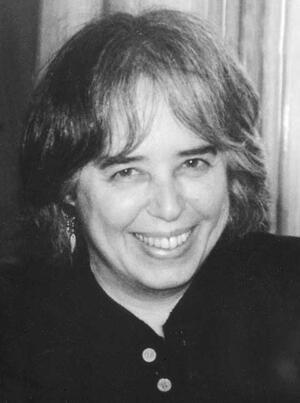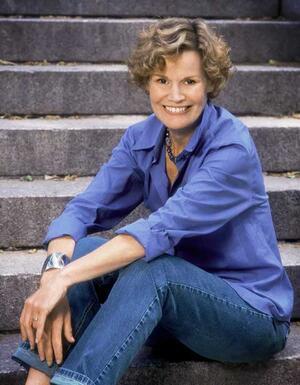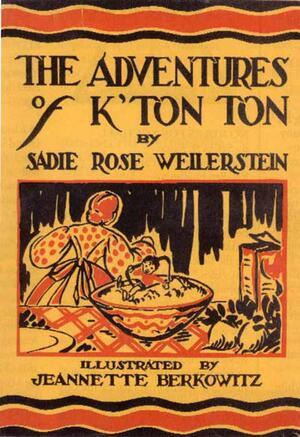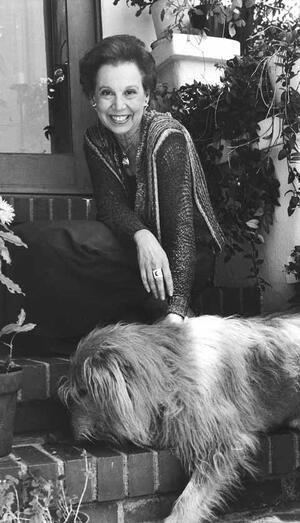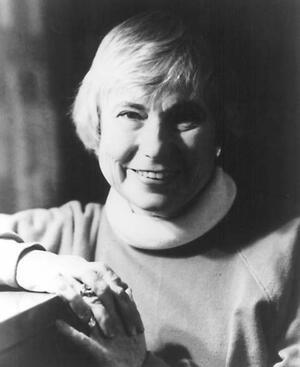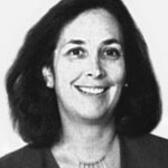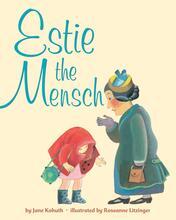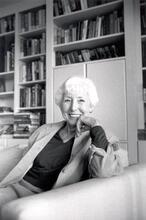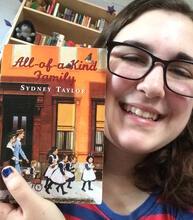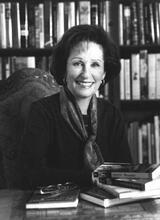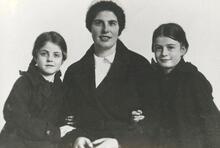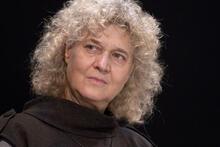Children's Literature in the United States
Children’s literature in the United States would be a different world without the work of Jewish women. This entry provides a broad overview of selected authors from the early twentieth century to the present. During the earliest part of this history, tomes focusing on bible stories and Jewish heroes gave way to Sadie Rose Weilerstein’s imaginative K’tonton books, then the work of Sydney Taylor, the first author to break into the mainstream in this field. The 1960s through 1980s brought about a slow increase in the diversity of the Jewish book market and increased interest in the Holocaust, Israel, and folklore, following broader trends in American youth literature. The early twenty-first century saw the rise of PJ Library and an ever-evolving approach to gender, sexual, and racial diversity within Jewish communities.
Introduction
It is hard to imagine the world of children’s books without Jewish women writers. There would be no Are You There, God? It’s Me, Margaret (1970)—or any books by Judy Blume; no From the Mixed-Up Files of Mrs. Basil E. Frankweiler (1967) as conceived by Elaine L. Konigsburg. Sydney Taylor’s All-of-a-Kind Family (1951) would not have introduced hundreds of thousands of children to the lives of five little girls in a Jewish immigrant family in New York. Heather would not have Two Mommies (1989), and Nick and Nora would not have An Infinite Playlist (2006). Hundreds of characters beloved by children around the world would not exist.
Jewish women have had an enormous influence on American youth literature, including bestsellers without obvious Jewish content, books geared specifically at Jewish children with a heavy emphasis on group identity, and everything in between. The high number of Jewish women in the field stems from the ways that ideas of care, especially care for children, have been gendered throughout the history of the United States. In the nineteenth century—particularly during the Victorian period—the education of young children was associated with women. It was thus primarily women who built the Jewish Sunday school movement and, with it, the recognition that there was a need for Jewish literature geared towards young people.
As the twentieth century began, and with it a growth of both Jewish and mainstream book publishers, the children’s “list”—once such things existed—were initially the province of women authors and editors, until it became profitable, when it attracted more men to the field.
A loosely chronological survey introduces readers to some of the key authors and themes in the history of children’s and young adult books written by Jewish women, with an emphasis on authors who wrote books with explicitly Jewish content.
In the Beginning: The Rise of Jewish Youth Literature
American children’s literature as a separate literary category is a recent phenomenon. American women writers began to produce generally sentimental works for young people in the eighteenth century, following previous moralistic, religious, and educational tracts, but American Jewish women writers for children emerged more clearly after the great waves of Jewish immigration in the late nineteenth and early twentieth centuries had quieted. This paralleled American publishing more generally; the dedicated children’s “list” from a publishing house was a twentieth century development, although the Jewish Publication Society, like many non-Jewish publishers, did produce bible adaptations and stories of Jewish heroes in the late nineteenth century.
Jewish children in Europe historically had been introduced directly to text study and had learned their religion through practice and community. But in America in the early 1930s and on through the 1950s, writers like Sadie Rose Weilerstein, Lillian Freehof, Deborah Pessin, Mamie Gamoran, Shulamith Ish-Kishor, and Elma Ehrlich Levinger produced biblical retellings, family fiction, legends, and nonfiction primarily designed to teach Judaism in this far different environment. Weilerstein’s Adventures of K’tonton (1935), the tale of a thumb-size boy and his doting observant parents, and Gamoran’s Hillel’s Happy Holidays (1939), also a family-based holiday guide, while now considered of questionable literary merit, succeeded in accomplishing their apparent goal: coating Jewish knowledge with honey to help the learning go down.
Ish-Kishor (1896–1977) was particularly proficient and prolific in producing Judaica for children, but her finest work was not to come until the 1960s, when A Boy of Old Prague (1963), a powerful historical novel about antisemitism in the 1600s, was named an American Library Association Notable Book. Later, Our Eddie (1969), a moving novel about a sensitive boy and his difficult father, won the 1969 Association of Jewish Libraries (AJL) Children’s Book Award and was a 1970 Newbery Honor Book.
The 1950s brought the first highly successful book by a mainstream publishing house to feature a Jewish family. This was the beginning of Sydney Taylor’s (1904–1978) groundbreaking All-of-a-Kind Family series, which came about almost by accident.
An actor and professional dancer with Martha Graham’s company, Taylor had recorded the adventures of her family of five sisters for her daughter, Jo, who was an only child. Later, her husband, reading about a contest being conducted by Follett, submitted the manuscript without her knowledge. To her surprise, it won publication as All-of-a-Kind Family (1951), garnering awards and launching Taylor on a new career. The books were a landmark in their depiction of Jewish holidays and life on the Lower East Side; they were also part of the making of American Jewish nostalgia for the neighborhood, and evinced a level of anxiety about appearing different, but not too different, that reflected the Cold War environment in which they were written.
The set of books containing the adventures of this warm New York immigrant family is still popular among children today. The last book in the series, Ella of All-of-a-Kind Family (1978), focuses on the eldest daughter as she faces difficult choices about her future; it was published the year of Taylor’s death. In 1979, AJL honored her posthumously for her body of work and renamed their annual Children’s Book Award the Sydney Taylor Book Award in her memory.
After writing a number of sailing stories, in the early 1950s Nora Benjamin Kubie, inspired by living in an area rich in American history and by reading about Jewish involvement in the Revolution, wrote Joel (1952), one of the few children’s novels presenting young Jews as active in the birth of this country. Later, Kubie went to Israel and began writing nonfiction works on the country and its archaeology, as well as Jewish children’s historical fiction, including the award-winning King Solomon’s Navy (1954).
The Era of Israel, Unrest, and Understanding: The 1960s and 1970s
Jewish women wrote many children’s books during this period and built important reputations in the field. The 1960s and 1970s brought about a greater attunement to diversity in the children’s book world. The Jewish community followed other minority groups in developing a stronger sense of ethnic pride, which began to peek through in the increased production of Jewish youth literature and more overt displays of Jewish difference within the pages of such books. At the same time, after Israel’s victory in the 1967 Six Day War, the American Jewish community’s greater interest in the modern state was evinced in a larger number of books on that topic.
Molly Cone, well known for her Mishmash (1962) series about a large and lovable dog, also produced important materials that were specifically Jewish: a holiday series for Crowell Publishing; a classic collection of original tales, Who Knows Ten: Children’s Tales of the Ten Commandments (1965); a series of storybooks called Hear O Israel (1972–1973), for the Union of Hebrew Congregations (now the Union for Reform Judaism); and several trade-published books about Israel, including The House in the Tree: A Story of Israel (1968), You Can’t Make Me If I Don’t Want To (1971), and Dance Around the Fire (1974). Cone won an AJL award in 1972 for her contributions to children’s literature (1972) and continued to write both general and Jewish fiction and nonfiction, including a work on Jewish identity and several on nature and ecology published in the 1990s.
In addition to novels and picture books, Rabbi Malka Drucker (b. 1945) wrote a distinguished holiday series, winning recognition from the Southern California Council on Literature for Children and Young People in 1982. Miriam Chaikin (1928-2015), winner of the Sydney Taylor Award for Body of Work (1984), produced a lively group of books on the holidays, as well as a popular series of Molly books, readable stories with strong moral underpinnings, and, later, a number of cautionary tales about a lovable Orthodox boy named Yossi. Both the Molly and the Yossi stories brought the concept of middos books, books that teach overtly Jewish ethical lessons, into trade publication and distribution by making them enjoyable and relatively free of didacticism.
Immigrants are always making transitions, feeling out of place, learning to fit in, processing new experiences. So are children. Chaya Burstein with her Rifka books (Rifka Grows Up, 1977), Marietta Moskin with Waiting for Mama (1975), Anita Heyman with Exit from Home (1977), and Carol Snyder with Ike and Mama and the Block Wedding (1979), all award winners, wrote hopefully about early twentieth-century immigration, picturing a promising New Land. Rose Blue (b. 1931), whose work includes books on African American children and Grandma Didn’t Wave Back (1972), about old age and nursing homes, later wrote on a more sober note about contemporary transplanted Soviet Jewish immigrants in Cold Rain on the Water (1979). Her story ends sadly, lacking the sentimental nostalgia often present in such tales.
During the 1960s and 1970s, Jewish women writers, perhaps caught up in the increasing mood of social protest, ethnic pride, and women’s rights, seemed to be writing more powerful juvenile books about Israel, about immigration, about assimilation, and about the Jewish American child in the broader society.
Not all families were perfect, and the “problem novel” dealing with death, divorce, drugs, and disillusionment did not leave Jewish families inviolate. Even those novels dealing with the past, harkening back to immigrant days, were more honest about confronting the problems involved in the transition. Marilyn Sachs’s Call Me Ruth (1982) won an AJL Award by showing a young girl’s desperate effort to become Americanized. As she tries to emulate her WASP teacher and disown her Yiddish-speaking union firebrand mother, we see the exploitation of immigrant workers, the courage of sweatshop organizers, and the tension caused in families where New World children and Old World parents have different goals and values.
Barbara Cohen’s first published work was the classic Carp in the Bathtub, but Cohen (1932–1992) also became known for her insightful intermediate and young adult novels about alienation, resolution, Jewish identity, and survival. King of the Seventh Grade (1982) is about a rebellious boy, son of an intermarriage, who finally chooses to become a Jew and celebrate his Lit. "son of the commandment." A boy who has reached legal-religious maturity and is now obligated to fulfill the commandmentsbar mitzvah. Thank You Jackie Robinson (1974), My Name Is Rosie (1978), and The Innkeeper’s Daughter (1979) are loosely based on the lonely lives Cohen and her siblings led as children of a Jewish innkeeper in a small antisemitic town. Cohen’s interests included Israel, folklore, and social concerns. The Secret Grove (1985) is told by a grown Israeli soldier sadly remembering when, as a boy, he shared a moment of friendship and an orange with an Arab boy who may now be his enemy. In Unicorns in the Rain (1980), Cohen forecast an increasingly armed society and set it in a mythic environment based on the story of Noah; in The Long Way Home (1990), Cohen confronted honestly the fears raised in a family of girls when the mother develops breast cancer.
After publishing an earlier historical novel, The King’s Persons (1963), under her own name, Joanne Greenberg (b. 1932) who is also an adult novelist, used the pseudonym Hannah Green to confront harsh realities in I Never Promised You a Rose Garden (1964), a controversial and startling work for young adults about her own adolescent mental problems. A later, also largely autobiographical children’s novel, which stunned readers by departing from previous stereotypes of the Jewish family as being warmly nurturing, was Summer of My German Soldier (1973) by Bette Greene (b. 1934). This World War II story of an abusive Jewish family in Arkansas, whose unhappy daughter finds her only friends in an escaped German POW and a supportive housekeeper, created quite a backlash but was critically acknowledged and remained popular well into the 1980s with young readers who felt equally isolated and misunderstood.
Norma Klein (1938–1989) also dealt with modern life’s issues honestly. Klein, the daughter of a Freudian psychoanalyst, found many of her books regarded as very unconventional, especially her first novel, Mom, the Wolf Man and Me (1972), in which the main character’s mother is unmarried. The book, written for middle-aged readers, was forced into the young adult category by the irregularity of this situation, but Klein nonetheless felt lucky and said she was sure she and many of her contemporaries, such as Judy Blume, were published only due to the delayed influence of the 1960s when openness and boldness were encouraged.
Blume’s work, of course, renowned for its frank and humorous approach to childhood and puberty, dominated the 1970s and 1980s. Are You There God? It’s Me, Margaret (1970) is famous for its discussions of menstruation but is perhaps most remarkable for its thoughtful discussions of religious searching.
Judith Viorst (b. 1931), best known for poetry and journalism, also wrote many children’s books filled with warm understanding and humor. Among the best known are The Tenth Good Thing About Barney (1971), a classic picture book about the death of a beloved pet, and Alexander and the Terrible, Horrible, No Good, Very Bad Day (1972). Other poets who became well known for a large body of children’s books were Maxine Kumin, who occasionally wrote with Anne Sexton, and Myra Cohn Livingston, whose output included volumes of poetry selected and/or composed for children, anthologies, and critical texts such as The Child as Poet: Myth of Reality. Livingston won numerous awards for her contributions to making poetry an important part of children’s education and literature and was an outstanding educator at UCLA for many years.
Holocaust and Survival
The 1970s saw a great many works on the Holocaust by American writers, Jewish and non-Jewish, many of whom had been born in Europe and escaped either just before or just after World War II, eventually becoming naturalized Americans. Among the latter was Esther Rudomin Hautzig (1930-2009) whose award-winning The Endless Steppe: Growing Up in Siberia (1968) tells of her Polish family’s arrest by the Soviets and exile to the Altai region of Siberia, where they survived for six years while the Nazis destroyed the family left behind.
Sonia Levitin (b. 1934) published Journey to America in 1970, basing it on her family’s flight from Berlin when she was three and their subsequent lives as refugees. Early exposure to danger and separation influenced the author’s concerns and often led her to deal with serious subjects such as war, aging, love, sacrifice, and freedom. Levitin received honors for such varied work as Journey to America, the western No-Return Trail (1978), the murder mystery Incident at Loring Grove (1988), and The Return (1988), about a young Ethiopian Jewish girl’s trek to Israel. Ironically, among Levitin’s numerous awards was the Catholic Children’s Book Prize in Germany.
Johanna De Leeuw Reiss (b. 1932), born in Holland, wrote two fictional books, The Upstairs Room (1972) and The Journey Back (1976), based on the years she and her sister spent hidden from the Nazis by a Christian couple in their farmhouse and what happened to them after they were freed. Reiss’s vivid recollections of these experiences, told through the eyes of a ten-year-old child, won acclaim from both Jewish and secular organizations. Marietta Moskin also lived in Holland but began writing while interred in camps; her Holocaust novel I Am Rosemarie (1972) reflected her wartime experiences.
American-born Marilyn Sachs (1927-2016), a prolific and much-prized author, was known for her realistic family novels and accurate depiction of the travails of childhood and adolescence. Many of her family stories are set in New York in a Jewish milieu, and her first book, Amy Moves In (1964), waited ten years for publication until the time was ripe for its honest portrayal of an imperfect family. Socially conscious in her life and much of her work, Sachs based her Call Me Ruth (1982) on an actual textile workers’ strike; Thunderbird (1985) protests against nuclear weapons; and At the Sound of the Beep (1990) deals with the homeless. Her Holocaust novel A Pocket Full of Seeds (1973) was based on the life of a friend and tells of a young French girl who spends the war hidden in a boarding school.
Judith Kerr’s family left Germany in time; their story is told in When Hitler Stole Pink Rabbit (1971), which is still widely taught in schools, and continued in The Other Way Round (1975) and A Small Person Far Away (1978).
Jane Yolen, noted for works of fantasy, describes the horrors of a Nazi concentration camp as experienced by a contemporary child in her powerful award-winning time-travel novel The Devil’s Arithmetic (1988). Briar Rose (1992) is another Yolen story that grapples with dark Holocaust histories, and, notably, addresses the issue of gay men who were victimized during the Holocaust. Olga Levy Drucker’s Kindertransport (1992), Aranka Siegal’s Upon the Head of the Goat: A Childhood in Hungary, 1939–1944 (1981), and Isabella Leitner’s The Big Lie: A True Story (1992) all depict this difficult topic for young readers.
Picture Books Worth a Thousand Words
In 1972, Barbara Cohen penned The Carp in the Bathtub, an ageless “don’t eat my pet for the holiday” picture book, which has appeared in over 400 collections and pedagogical anthologies. Subsequently, Cohen produced outstanding picture books on biblical themes (The Binding of Isaac, 1978), holidays (Yussel’s Prayer, 1981; Here Come the Purim Players!, 1984), and Israel (The Secret Grove, 1985), winning the 1981 Sydney Taylor Body of Work Award. Molly’s Pilgrim (1983), a Thanksgiving story about Russian immigrants, relates the American holiday to the Jewish holiday of Lit. "booths." A seven-day festival (eight days outside Israel) beginning on the 15th day of the Hebrew month of Tishrei to commemorate the sukkot in which the Israelites dwelt during their 40-year sojourn in the desert after the Exodus from Egypt; Tabernacles; "Festival of the Harvest."Sukkot and was made into a short live-action film, which won an Academy Award in 1985.
Charlotte Zolotow (1915-2013), author and editor, was one of the best-known Jewish women writers who did not write on specifically Jewish themes. One crucial theme in Zolotow’s work is that of family generations and heritage. Gentle works like The Sky Was Blue (1963) and This Quiet Lady (1992) show that, although people change through time, feelings remain the same. In her classic My Grandson Lew (1974), she broke ground as one of the first authors to address the forbidden topic of death. Zolotow tells of a small boy, wakened by memories of his dead grandfather, relieving his grief by talking about his sense of loss with his mother. Another important topic she broached was more fluid gender expression and roles. In William’s Doll (1972), which was included in the Free to Be You and Me album, William’s father and friends believe that liking to play with dolls is just for girls; his wise grandmother knows better.
Other Jewish women contributed greatly to the world of picture books, both as writers and as illustrators. Artist-writer Marilyn Hirsh (1944–1988) was best known for her books on Jewish themes, especially folktales, village life, the adventures of Jewish immigrant children, and Jewish holidays. She produced over 30 books, some of them Indian folktales while in India in the Peace Corps, and in 1980 won the first Sydney Taylor Body of Work Award given by AJL. Among her best-known titles are Where Is Yonkele? (1969) and Could Anything Be Worse? (1974); she also illustrated books by other authors, such as David Adler’s The House on the Roof (1976).
Margot Zemach (1931–1989) was primarily an illustrator, often of folktale adaptations by her husband, Harve, and many stories and tales by various well-known writers including Isaac Bashevis Singer and Yuri Suhl. However, she also adapted tales herself, the most Jewish of which was It Could Always Be Worse: A Yiddish Folktale (1976). She was winner of a Fulbright scholarship, various honors, and the Caldecott Medal in 1974.
Anita Lobel (b. 1934), Polish-born survivor of a German concentration camp, married Arnold Lobel, himself an author and illustrator of children’s books, in New York after she immigrated. Since 1965, she has written and illustrated many theatrical picture books, as well as illustrating texts by her husband. Their joint venture On Market Street (1981) was a 1982 Caldecott Honor Book. Her own works include Allison’s Zinnia (1990) and the award-winning memoir No Pretty Pictures (1988).
Patricia Polacco (b. 1944) draws on her Russian background for many of her picture books, and her AJL Award winner The Keeping Quilt (1988) reflects her Jewish heritage as well. Cross-cultural friendship between an old Jewish woman and a young African American boy is the focus of Mrs. Katz and Tush (1992), and the support diverse neighbors gave each other when the Oakland fire struck during the Jewish holiday of Sukkot is emphasized in Tikvah Means Hope (1994). Polacco’s work is a good example of how today’s Jewish women writers and artists transcend stereotypes and leap cultural divides in trade books. Her books are taught widely in elementary schools around the country, and she is known for her visits to schools, often made with the original “keeping quilt” in tow.
Jane Breskin Zalben (b. 1950), watercolor artist and author of a number of novels, moved Jewish holiday books into the mainstream with Beni’s First Chanukah (1988), the first of her series for preschoolers. This book and its successors successfully adapted the popular tradition of depicting small animals in cozy family settings and made Zalben a favorite for laptime read-alouds.
An important development in 1975 was the founding of Kar-Ben Copies, Inc., a small Jewish children’s press, by two women, Judye S. Groner and Madeline Wikler, who first wrote, illustrated, published, sold, packed, and mailed the kind of Jewish-content books they wanted for their children. The publishing house they founded has become an important mainstream house, now known as Kar-Ben Publishing, with a large backlist of universally appealing picture books, all with Jewish themes, now widely distributed by major chains.
The 1980s and 1990s

"In the beginning there was storytelling." So says master children's storyteller Peninnah Schram, author of Jewish Stories One Generation Tells Another and other Jewish children's favorites. She explains that "storytelling has three key elements—the story, the teller and the listener… [It] is… as an art… a craft… a shared experience…"
Institution: Rita Berman Frischer.
Fran Arrick, Jan Greenberg, Johanna Hurwitz, Sheila Solomon Klass, Kathryn Lasky, Marilyn Levy, Lois Ruby, Jan Slepian, and Hilma Wolitzer are among the writers who produced a number of well-received children’s and young adult novels during this period. Their stories continue to focus on the insecurities of life, on fitting in, on the importance of family, on the difficulties inherent in human relationships, and on problems of their time. Arrick’s Chernowitz (1981) deals with antisemitism and revenge; Ruby deals with charismatic religion versus rational Judaism in Miriam’s Well (1993) and with neo-Nazi youth movements and their powerful attraction in Skin Deep (1994).
Jan Slepian’s The Alfred Summer (1980) and Lester’s Turn (1981), based on her epileptic, hemiplegic brother, demonstrates her frequent theme of how difficult but how important it is for people to connect with each other. Slepian often addresses the challenges of mental and physical disabilities; in Risk n’ Roses (1990), Skip, the “normal” daughter of a Jewish family, struggles with her longing to be accepted by other kids and her loyalty to her differently abled sister. Susan Goldman Rubin also deals with issues of ability in Emily Good as Gold (1993), the story of Emily’s effort to become more independent of her overprotective family as she enters adolescence.
A new development in the 1990s was a resurgent interest in folklore, storytelling, and the resultant popularity of Jewish tales, both individually and in collections. Among women writers well known in this area are Barbara Diamond Goldin and Peninnah Schram. This trend would continue—and flourish further—in the early twentieth century.
Doris Faber (b. 1924), Nancy Smiler Levinson (b. 1938), and Rhonda Blumberg (b. 1917) are best known for nonfiction. Faber’s biographies and studies of politics are noteworthy; Levinson, who has also written fiction, has won awards for her historical studies; and Blumberg has won numerous accolades for her works on American historical movements and eras. Biographies on famous Israelis include Malka Drucker’s life of Eliezer Ben Yehuda (1986), Hazel Kranz’s work on Henrietta Szold (1987), and Ida Cowan’s story of spy Sarah Aaronsohn. Chaya Burstein’s A Kid’s Catalog of Israel (1988) and Barbara Sofer’s Kids Love Israel; Israel Loves Kids (1988) introduce children to various facets of Israeli history, geography, and life.
One of the most important developments in the children’s literature of this period was the growth of a more inclusive and diverse approach to gender and sexuality. Lesléa Newman’s Heather Has Two Mommies (1989) was one of the first picture books to depict lesbian parents and their child. This landmark book, which became one of the most oft-banned tomes of the 1990s, did not depict an explicitly Jewish family, but it was written by a Jewish author who has written dozens of books for both children and adults that deal with Jewish themes. Among many other works, Newman is the author of Ketzel: The Cat Who Composed (2016) and Gittel’s Journey: An Ellis Island Story (2019), which was honored by the Sydney Taylor Book Awards. Newman received the 2020 Body of Work award from that same body.
Into the Twenty-First Century
Two themes dominate the Jewish children’s book world of the early twenty-first century: a growing awareness of the need for more diverse Jewish children’s books, and the rise of PJ Library. Though the flourishing youth literature scene of this period is still heavily populated by holiday tales and a focus on Ashkenazi Jews, it is far richer in terms of geographic scope and shows a far more heterogenous Jewish world than that depicted a century ago.
PJ Library, a program of the Harold Grinspoon Foundation that now reaches Jewish households around the world, shook the Jewish book world when it was founded in 2005. As of early 2020, the organization says it has shipped 12 million free books to households in the United States and Canada alone. On the one hand, this has led to the printing and consumption of a huge number of Jewish children’s books, including reissues of many of the classics mentioned above. On the other hand, the fact that the books are free has led to criticism from some authors because of the effect it has on other sales.
At the time of this writing, 441 out of the 609 total titles PJ Library has released or reprinted were written by women. (Many of these titles come from prolific authors who appear multiple times within the collection, but this is true for the rest of the authors as well.) Female authors are thus an integral part of this new canon, which, as Rachel B. Gross writes, “seeks to persuade American Jewish families to make Judaism an important part of their lives.”
The last two decades have been a time when Jewish Americans began—slowly—to attend to diversity within the community, recognizing that Ashkenazi stories with two Jewish parents were not the only ones to be told. Although much work remains on this front, recent authors, many of them women, have made a greater effort to create works that reflect the full global diversity of Jewish history, as well as the large number of Jewish families that include interreligious and interracial marriages. So, for example, Brynn Olenberg Sugarman’s Rebecca’s Journey Home (2006) describes a family adopting a daughter from Vietnam; Karen Fishman’s Nonna’s Hanukkah Surprise (2015) brings readers into the blended winter celebrations of a Jewish family with an Italian Catholic grandmother; Pamela Ehrenberg’s Queen of the Hanukkah Dosas (2017) introduces a family with both Jewish and Indian background; and Natasha Diaz’s debut young adult novel Color Me In (2019) details the experiences of the biracial daughter of a Black mother and Jewish father.
Rabbi Sandy Eisenberg Sasso’s Abuelita’s Secret Matzahs (2005), which is set among the descendants of conversos, Jews who converted to Christianity in early modern Iberia but who retained crypto-Jewish practices, is one of the most well-known books to advance discussions of Jewish diversity. Sasso is also a prominent writer of late twentieth and early twenty-first century children’s books for children of many religions, bringing the strength of her rabbinical background to widely circulated books like God in Between (1998), God’s Paintbrush (2001), In God’s Name (2004), and other works that advanced new ways of discussing theology with young children, as well as books featuring women and girls, such as Naamah, Noah’s Wife (2002) and Anne Frank and the Remembering Tree (2005). Sasso, the first woman ordained as rabbi by the Reconstructionist movement, reminds us that the advent of women in the rabbinate yields changes far beyond the pulpit.
The early twentieth century also saw a strong further reclamation and enunciation of histories of Jewish women’s activism. This is evident in books like Michelle Markel’s Brave Girl: Clara and the Shirtwaist Makers’ Strike of 1919 (2013), Erica Silverman’s Emma Lazarus: The Story of Liberty’s Voice (2011), and Debbie Levy’s I Dissent: Ruth Bader Ginsburg Makes Her Mark (2016), which won the Sydney Taylor Book Award for younger readers.
In the seventy years from the publication of All-of-a-Kind Family in 1951 to the updating of this online encyclopedia in 2020, Jewish children’s literature has undergone many iterations, and is still going strong. A deeper assessment of this ever-evolving canon would consider not just the sex identity of its authors, but also an analysis of the gendered patterns found within the pages of their books. We have gone from the “Dusting is Fun!” chapter of All-of-a-Kind Family, where “Mama’s girls learned to be the best little housekeepers in the world,” to stories of an immensely popular Jewish Supreme Court Justice. Perhaps, as the Jewish book world expands, we will see not just new roles for women and girls, but also greater attention to the fluidity of gender.
Children’s Books: Awards and Prizes, Including Prizes and Awards for Young Adult Books. Compiled and edited by the Children’s Book Council (1985)
Clark, Beverly Lyon. Kiddie Lit: The Cultural Construction of Children’s Literature in America. Baltimore: The Johns Hopkins University Press, 2003.
Cummins, June. “Becoming An ‘All-of-a-Kind’ America: Sydney Taylor and Strategies of Assimilation.” The Lion and the Unicorn 27:3 (September 2003): 324-343.
Davis, Enid. A Comprehensive Guide to Children’s Literature with a Jewish Theme. New York: Schocken, 1981.
Diner, Hasia. Lower East Side Memories: A Jewish Place in America. Princeton: Princeton University Press, 2002.
Frischer, Rita Berman. “The Bar/Bat Mitzva Book.” In The Schocken Guide to Jewish Books: Where to Start Reading About Jewish History, Literature, Culture and Religion, edited by Barry W. Holtz. New York: Schocken, 1992.
Frischer, Rita Berman. “Israel in Children’s Books.” In Ariel: The Israel Review of Arts and Letters 99/100 (1995): 100–113
Gold, Penny Schine. Making the Bible Modern: Children’s Bibles and Jewish Education in Twentieth-Century America. Ithaca: Cornell University Press, 2004.
Grossman, Cheryl Silberberg, and Suzy Engman. Jewish Literature for Children—A Teaching Guide. Alternatives in Religious Education, 1985.
Gross, Rachel B. “People of the Picture Book: PJ Library and American Jewish Religion.” In Religion and Popular Culture in America (Third Edition), edited by Bruce David Forbes and Jeffrey H. Mahan. Berkeley, California: University of California Press, 2017.
Jurich, Marilyn. “Once upon a Shtetl.” The Lion and the Unicorn: A Critical Journal of Children’s Literature l, nos. 1 and 2 (1977): 9–25
Kertzer, Adrienne. “Do You Know What ‘Auschwitz’ Means? Children’s Literature and
the Holocaust.” The Lion and the Unicorn: A Critical Journal of Children’s Literature 23, no. 2 (1999): 238-256.
Kirkpatrick, D.L., ed. Twentieth-Century Children’s Writers. 3d ed. St. James Press, 1989.
Krasner, Jonathan. “A Recipe for American Jewish Integration: The Adventures of K’tonton and Hillel’s Happy Holidays.” The Lion and the Unicorn 27, no. 3 (September 2003): 344-361.
Krasner, Jonathan, and Joellyn Wallen Zollman. “Are You There God? Judaism and Jewishness in Judy Blume’s Adolescent Fiction.” Shofar: An Interdisciplinary Journal of Jewish Studies 29:1 (Fall 2010): 22-47.
Nodelman, Perry. “Children’s Literature: 1900 to the Present.” In The Oxford Companion to Women’s Writing in the United States, edited by Cathy N. Davidson and Linda Wagner-Martin. New York: Oxford University Press, 1995.
Posner, Marcia W. “Fifty Years of Jewish Children’s Books in the Jewish Book Annual.” In Jewish Book Annual: The American Yearbook of Jewish Literary Creativity. Vol. 50 (1992–1993) 5753: 81–98.
Posner, Marcia W. “A Search for Jewish Content in American Children’s Fiction.” Abstract of doctoral diss., New York University, 1980.
Rudman, Masha Kabakow. Children’s Literature: An Issues Approach. New York: Pearson, 1994.
Sarna, Jonathan. JPS: The Americanization of Jewish Culture 1888-1988. Philadelphia: The Jewish Publication Society, 1989.
Silvey, Anita, ed. Children’s Books and Their Creators: An Invitation to the Feast of Twentieth-Century Children’s Literature. New York: Houghton Mifflin, 1995.
Wacker, Jill. “Children’s Literature: 1650 to 1900.” In The Oxford Companion to Women’s Writing in the United States, edited by Cathy N. Davidson and Linda Wagner-Martin. New York: Oxford University Press, 1995.

